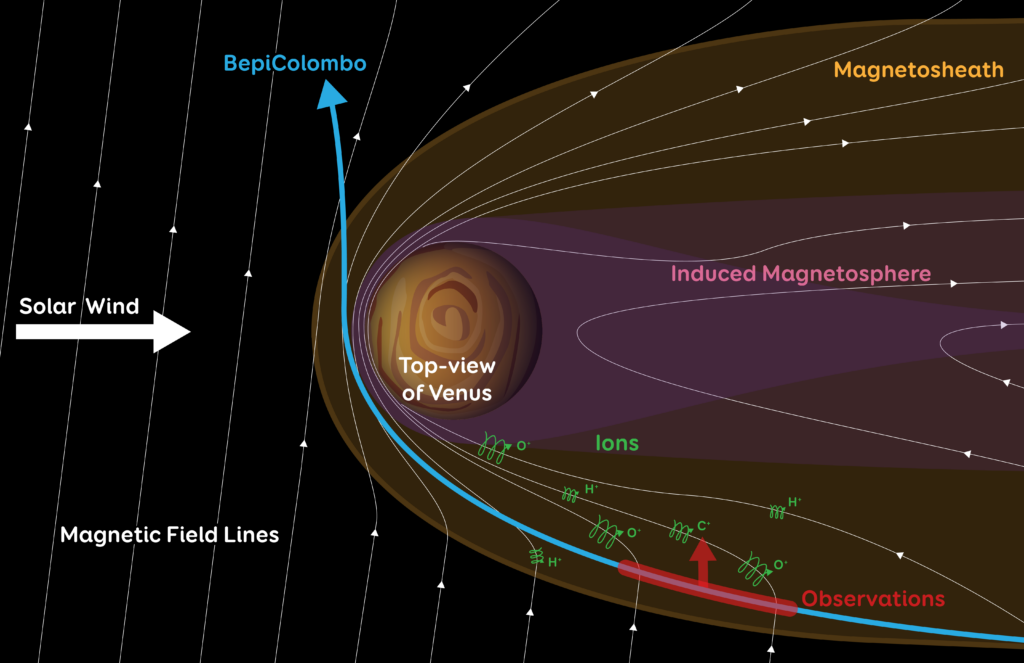
Atmospheres are what make a planet good or evil for life.
One of the questions I get asked most often is, “Can we terraform Venus to be like Earth?”
Sure! Just don’t expect it to stay that way.
Our Earth has a strong magnetic field that bends away a lot of the Sun’s nastier attempts to strip away our atmosphere. This magnetic field is generated deep inside the Earth and exists because we are big enough to still have an ooey gooey dynamo-making structure, unlike Mars which has cooled to a more solid, magnetic-free, state. It also exists because we are rotating fast enough for charged particles in that ooey gooey goodness to work a bit like an electromagnet, unlike on Venus where slow rotation leaves the ions without the same opportunities.
We really are the baby bear of planets, with everything organized just right for life.
And researchers now think the same may once have been true on Venus as well! Our overheated twin likely once had oceans and water just like us.
Using the BepiColombo spacecraft, researchers are working out the details of how Venus became the acid-bake oven of our solar system.

This mission destined for Mercury passed through Venus’ space on August 10, 2021. It flew in from behind and experienced an induced magnetic field generated by the Sun pushing ionized particles into motion. Using its onboard mass spectrometer, BepiColombo was able to identify hydrogen, oxygen, and carbon ions — the mission was able to literally detect the stuff needed to make water and life getting blown away in the solar wind.
This first-of-its-kind measurement can’t be made by an orbiter; they just don’t explore the needed parts of the environment around a planet. It took a flyby from a mission with a totally different destination to make this discovery.
This is your friendly reminder — when NASA, ESA, and other nations plan our missions to other worlds, a lot of effort goes into finding additional science those spacecraft can do en route. Just like your road trip might add in a stop at the world’s largest ketchup bottle, mission planners add in all the tourist sites – or at least worlds and space rocks – that are along the way.
